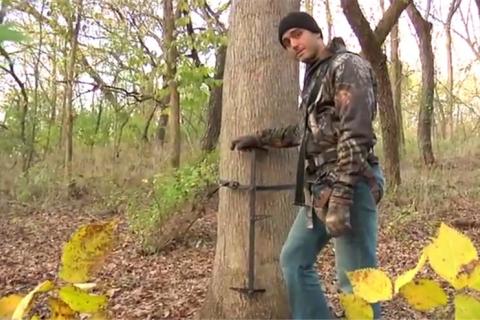
Treestands provide excellent opportunities for hunters, but they come with extra risks. An average of 20 hunters die every year from treestand falls—and many more are permanently impaired. The National Bowhunter Education Foundation found that 82 percent of hunters who have a treestand accident weren’t using a safety harness.
![]() Tip Watch video: Preparing to Hunt From Treestands here
Tip Watch video: Preparing to Hunt From Treestands here
But these accidents can be prevented by always following a few simple steps.
- Pick a safe tree: it should be living, stable, and fairly straight with few branches low to the ground.
- Assemble your stand according to manufacturer instructions and bring the instructions when you set up your stand to double-check as you go. Use a lineman’s-style belt or climbing belt—attached to the tree—during setup.
- Always inspect your stand to ensure everything is in working order. If a strap or rope is frayed, do not use the stand.
- Stay connected—always. Wear a full-body safety harness; whenever you are not touching the ground, use a lifeline.
- Carry a cell phone or two-way radio, and make sure someone always knows where you are.
Always use your fall-arrest system (FAS), which should include a full-body harness, a lineman’s-style belt or climbing belt, a tree strap, a tether, a suspension-relief strap, and a lifeline (check local regulations and requirements).
Remember, the FAS needs to be rated for your hunting weight, which is your weight plus the weight of your hunting equipment and gear. treestands are a great tool for hunters, but you have to use them safely!
![]() Tip: Check out Heunter-ed.com state approved online safety courses here.
Tip: Check out Heunter-ed.com state approved online safety courses here.
Watch video: Preparing to Hunt From Treestands
- 3045 views


